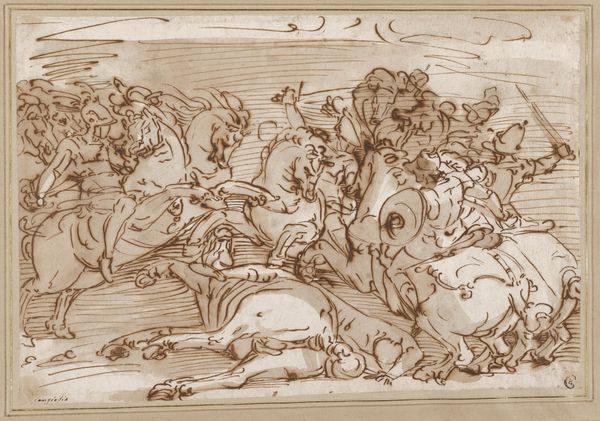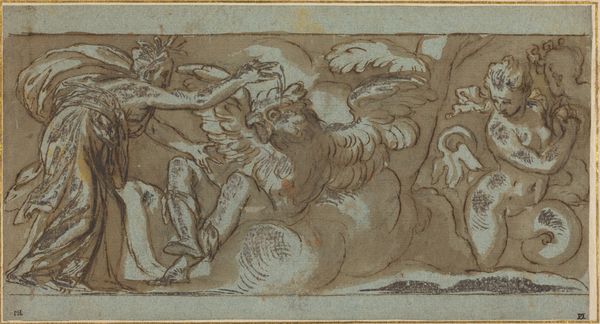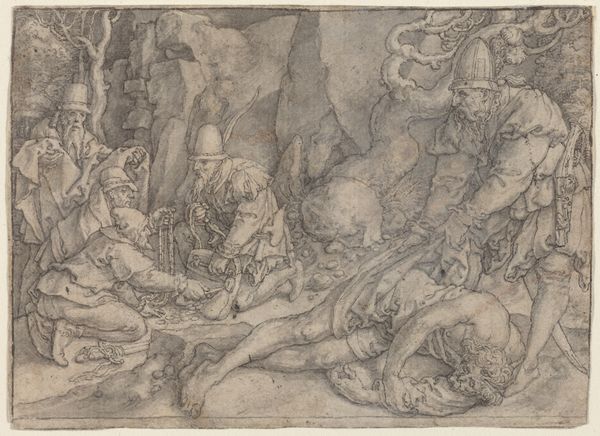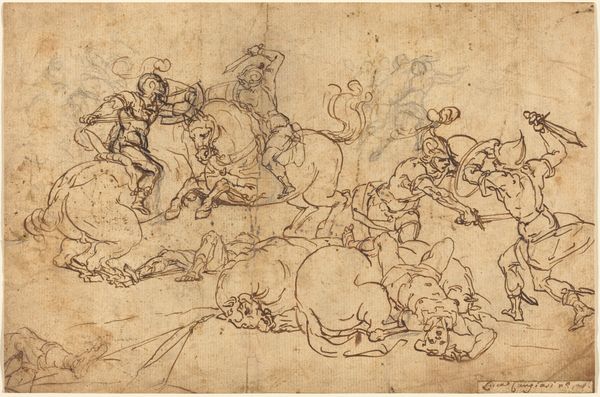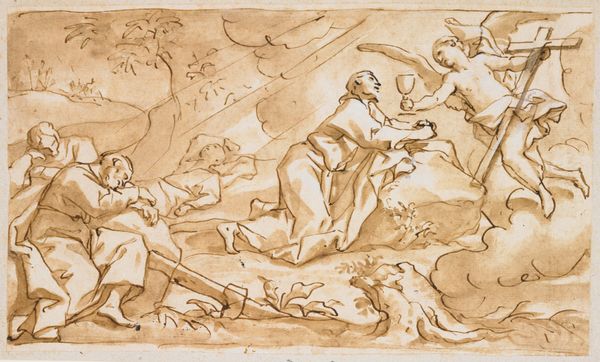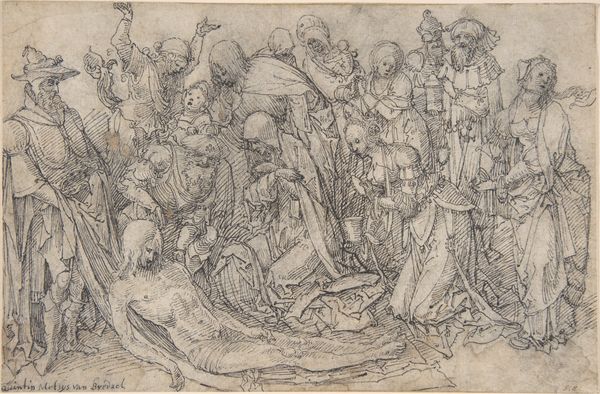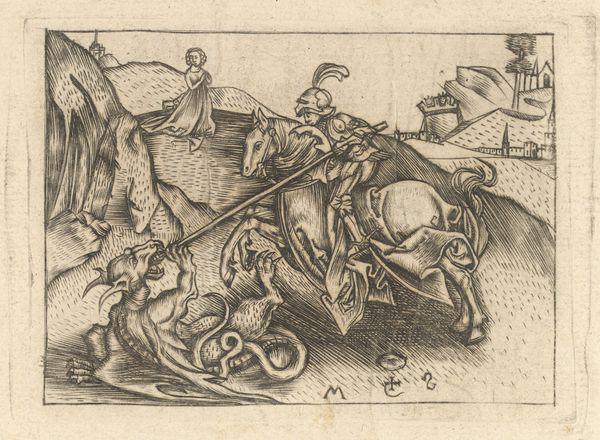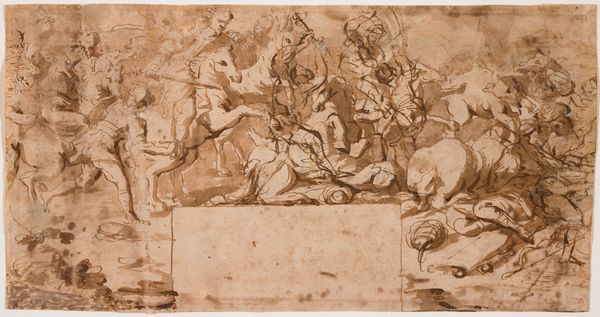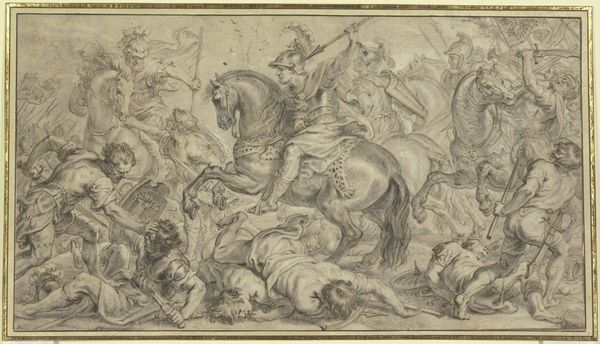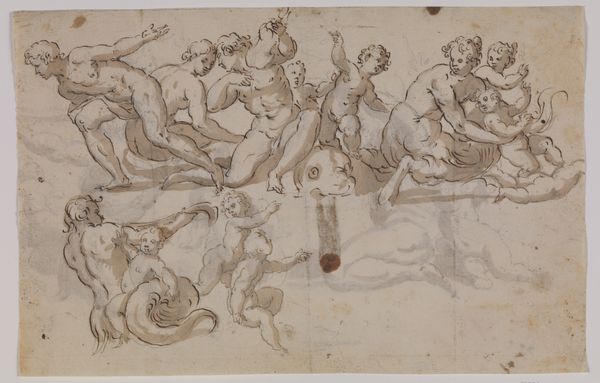
drawing, ink
#
drawing
#
allegory
#
baroque
#
ink painting
#
figuration
#
ink
#
watercolor
Dimensions: 142 mm (height) x 210 mm (width) (bladmaal)
Editor: This ink and watercolor drawing is titled *Udkast til loftsdekoration*, or "Draft for Ceiling Decoration," made sometime between 1612 and 1695 by Pierre Mignard. The energetic lines and flowing composition give it a really dynamic feel. What can you tell us about this Baroque piece? Curator: Well, this preparatory drawing offers us a glimpse into the artistic process during a period of grand spectacle. Baroque art served as a tool for projecting power, particularly for the aristocracy and the church. Think about the intended location: a ceiling. How does that context influence our interpretation? Editor: I guess placing this type of allegory on a ceiling creates a sense of awe, looking up at a scene of grandeur… almost divine right? Curator: Precisely! These ceiling decorations weren’t just about aesthetics. They were designed to impress, to instill a sense of authority and inspire specific emotions, whether religious fervor or loyalty to a monarch. Note the figures: who are these characters and what role do you imagine they're playing? Editor: There are winged angels on either side of an aristocratic figure with their arm outstretched, it must have been meant to emphasize his… God-given right to rule? Curator: That’s a perceptive interpretation. By analyzing this "draft," we start to uncover the socio-political strategies embedded within Baroque visual culture, it allows insight into the construction of power through art. Editor: I hadn’t thought about the political side of ceiling art. I’m glad you brought that up. Curator: And seeing it as a draft rather than a final piece allows one to see how it all began before the large mural.
Comments
No comments
Be the first to comment and join the conversation on the ultimate creative platform.

